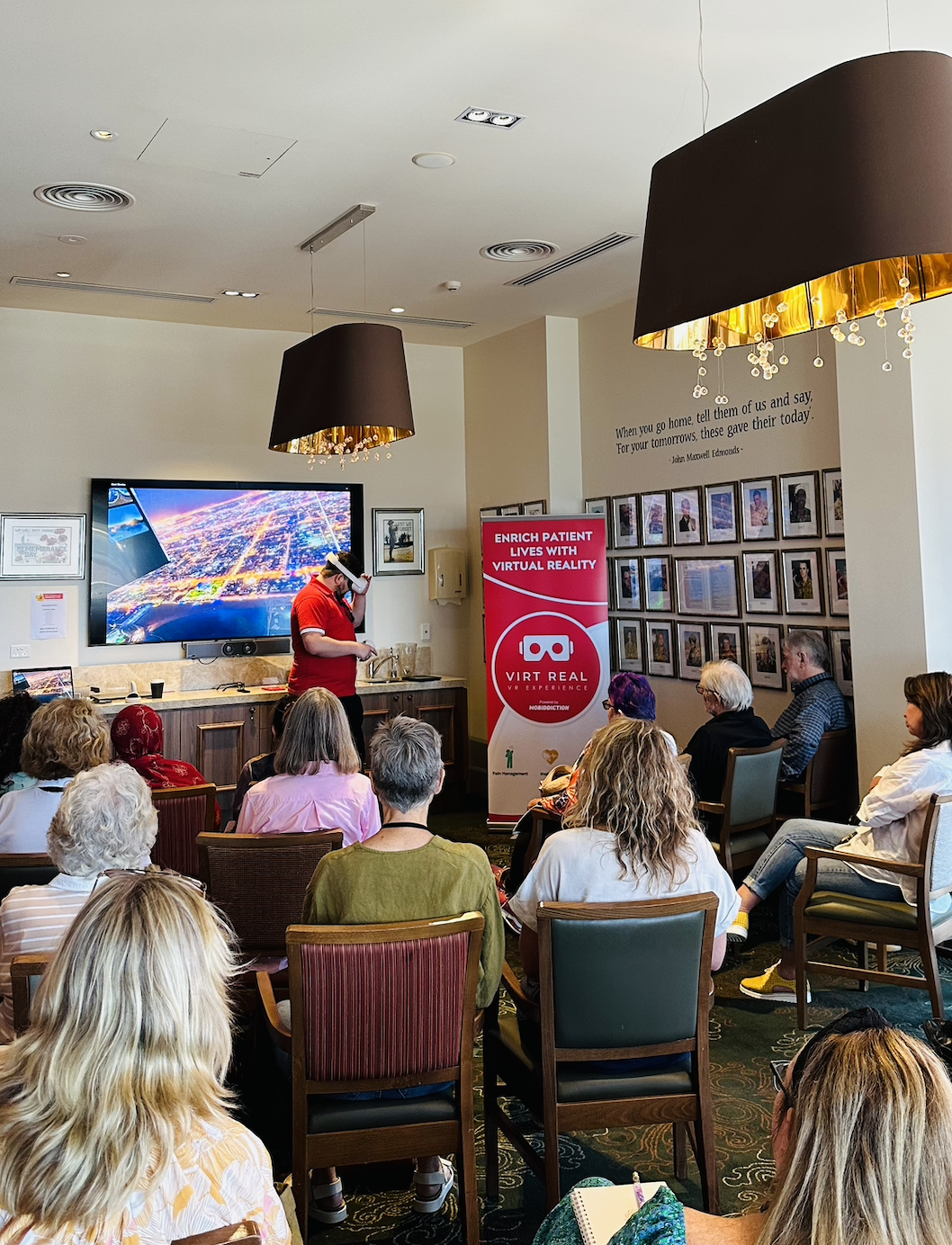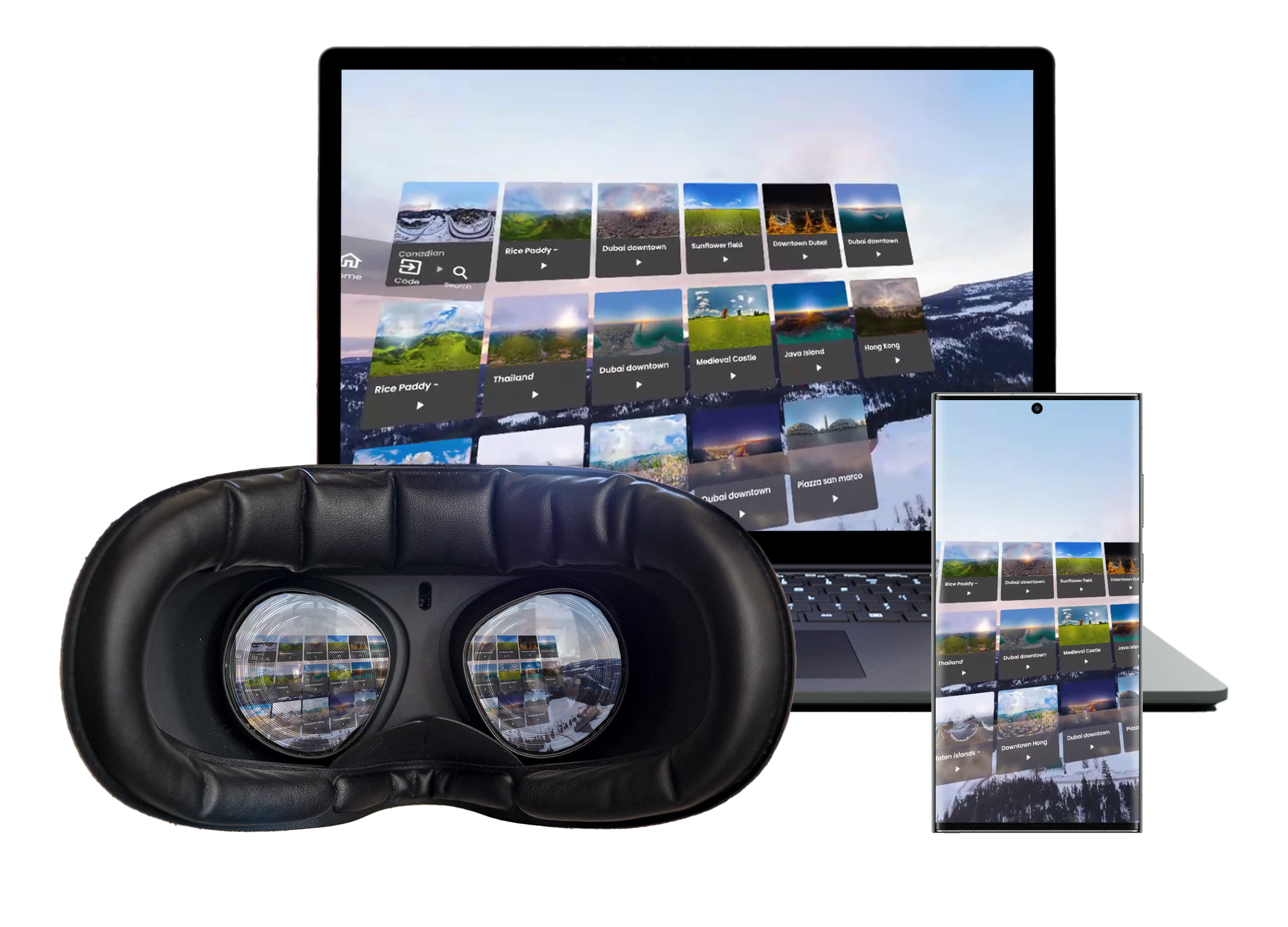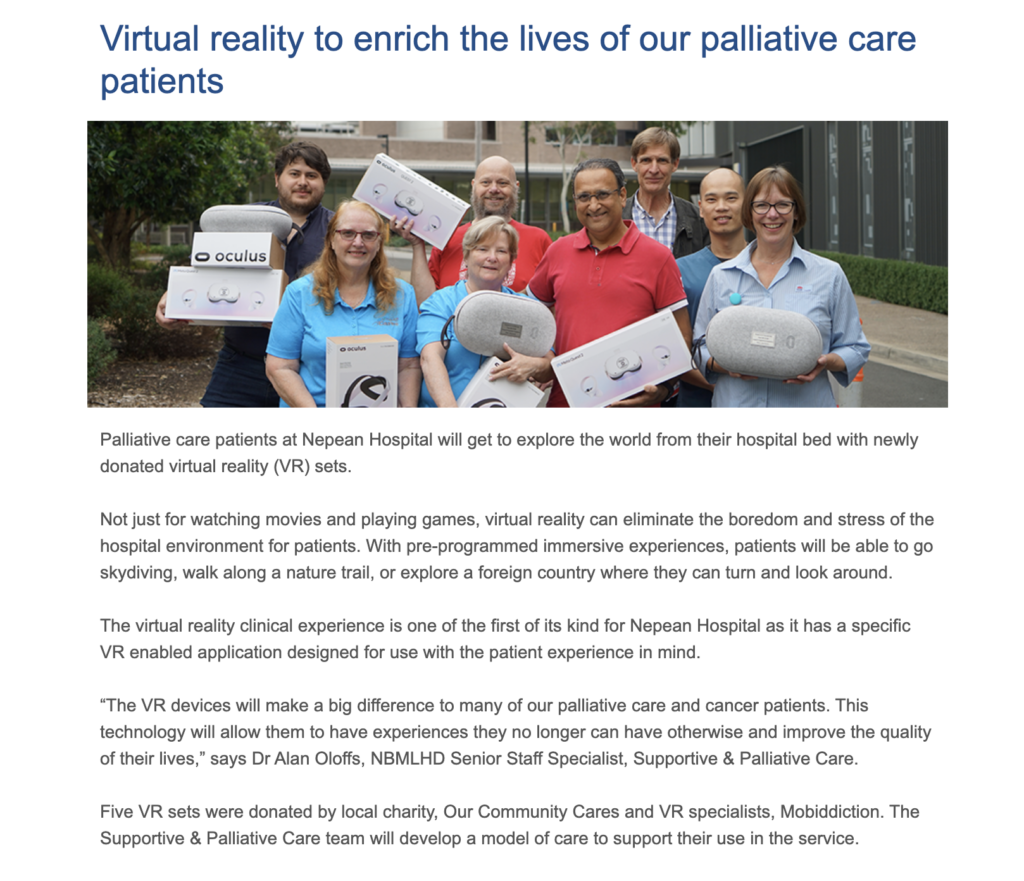Virtual Reality (VR) in Healthcare: An Exploration of Emerging Use Cases
Virtual reality is a fast-evolving technology that already has several promising applications in medicine.
VR platforms provide the user with the possibility of submerging into an alternative 3D environment and interacting with the surroundings in a real-time manner. A growing number of publications have described the potential applications of VR in medicine.
The role of VR technology in pain management and rehabilitation has been studied. VR has been shown to reduce patient-perceived pain levels1 and reduce anxiety created by a medical procedure2. VR rehabilitation therapy can simulate real-life situations to improve physical functions3 for patients who have experienced a physical disability associated with a stroke or other medical condition.
VR technology can also incorporate the features of meditation, cognitive behavioural therapy and mindfulness4, highlighting how these often under appreciated ‘soft’ concepts of modern medicine can contribute to ‘hard’ clinical outcomes.
The incorporation of virtual reality in daily practice will inevitably make clinical care more robust, patient-centred and safe.
Introduction
While VR in healthcare runs a wide gamut of specialties and covers both patient and practitioner areas of interest, here are of some current and emerging applications of VR Technology in Healthcare:
Pain Distraction and Management:
VR for Pain Relief:
Patients undergoing painful procedures, such as wound care or physical therapy, can use VR as a distraction tool to mitigate pain and anxiety.
Chronic Pain Management:
VR experiences designed for relaxation and mindfulness can aid in managing chronic pain conditions.
Preoperative and Pre-procedural Anxiety Reduction:
Virtual Tours and Preparation:
Patients can undergo virtual tours of medical facilities or procedural environments to familiarise themselves, reducing anxiety before surgeries or medical procedures.
Distraction and Mindfulness:
Patients can use VR to visit peaceful and calming virtual spaces to distract themselves from imminent or in-progress procedures.
Rehabilitation and Physical Therapy:
Virtual Exercise Programs:
VR can guide patients through interactive rehabilitation exercises, making physical therapy more engaging and motivating.
Monitoring Progress:
Healthcare providers can track patients’ progress in real-time through VR applications, adjusting rehabilitation plans accordingly.
Cognitive Rehabilitation:
VR Cognitive Exercises:
Patients recovering from strokes or traumatic brain injuries can engage in VR-based cognitive exercises to improve memory, attention, and problem-solving skills.
It is still “early days for VR” but Virtual Reality is already showing signs of great potential to be incorporated within daily health care practices. As time and more solutions are implemented around the world, more patient-centred user experiences and solutions will evolve.
Virtual Reality is a fast-evolving technology that already has several promising VR applications in the health sector providing an immersive 3D experience.
Definition of key terms and concepts used in VR
Virtual Reality (VR): is a virtual world immersive experience that uses a headset to completely replace a user’s surrounding view with a simulated, immersive, and interactive virtual environment.
Headset: A headset or head mounted display (HUD) is a device worn on the head that includes one or two displays placed before the wearer’s eyes so that they can experience virtual reality (VR). A well-known example is the Meta Quest 2 VR Headset.
Head tracking: In VR, head tracking refers to an application’s ability to recognize the movement of a user’s head. As a result, head tracking is what allows users to view their surroundings in a virtual reality program much as they would in the real world.
Immersion: In VR, immersion refers to the sensation of being fully present within a virtual program. Heightened immersion allows users to experience the virtual world as if they are a part of it rather than just observing it from the outside.
Gesture: Any bodily motion that controls or influences VR content is called a gesture. A user might use a handheld controller, or with devices capable of hand tracking they could wave their hand at a virtual door to make it open, for instance, or lean forward to simulate walking.

RECOMMENDED DEVICE
VR HEADSET (METAQUEST 2 OR IDEALLY 3 + ELITE STRAP WITH BATTER + CARRY CASE)
Current recommendation on the preferred device is either a MetaQuest 2, or ideally MetaQuest 3 as the resolution is distinctively nicer than the 2, the headset is lighter and our VirtReal application works just with hand and gesture control so there is no need for controllers. We’ve generally been buying these off Amazon, if it helps here is a LINK for you to purchase the devices.
References:
-
Spiegel B, Fuller G, Lopez M, Dupuy T, Noah B, Howard A, et al. (2019) Virtual reality for management of pain in hospitalized patients: A randomized comparative effectiveness trial. PLoS ONE 14(8): e0219115. https://doi.org/10.1371/journal.pone.0219115
-
Smith V, Warty R, Sursas J, Payne O, Nair A, Krishnan S, da Silva Costa F, Wallace E, Vollenhoven B
The Effectiveness of Virtual Reality in Managing Acute Pain and Anxiety for Medical Inpatients: Systematic Review
J Med Internet Res 2020;22(11):e17980
URL: https://www.jmir.org/2020/11/e17980
DOI: 10.2196/17980 -
Schultheis, M. T., & Rizzo, A. A. (2001). The application of virtual reality technology in rehabilitation. Rehabilitation Psychology, 46(3), 296–311. https://doi.org/10.1037/0090-5550.46.3.296
-
Raluca IGNA, Simona ŞTEFAN, Ioan ONAC, Ioana ONAC , Rodica-Ana UNGUR, Aurora SZENTAGOTAI TATAR (2014). MINDFULNESS-BASED COGNITIVE-BEHAVIOR THERAPY (MCBT) VERSUS VIRTUAL REALITY (VR) ENHANCED CBT, VERSUS TREATMENT AS USUAL FOR CHRONIC BACK PAIN. A CLINICAL TRIAL, Journal of Evidence-Based Psychotherapies Vol. 14, No. 2, September 2014, 229-247 https://www.researchgate.net/profile/Simona-Stefan-4/publication/281874877_Mindfulness-based_cognitive-behavior_therapy_MCBT_versus_virtual_reality_VR_enhanced_CBT_versus_treatment_as_usual_for_chronic_back_pain_A_clinical_trial/links/5a54b24d0f7e9b205de2e7c3/Mindfulness-based-cognitive-behavior-therapy-MCBT-versus-virtual-reality-VR-enhanced-CBT-versus-treatment-as-usual-for-chronic-back-pain-A-clinical-trial.pdf
Mobiddiction are currently trialling Virtual Reality (VR) in hospitals with one example of our VirtReal platform being trailed at the Napean Hospital, part of the Penrith and Blue Mountains LHD. You can find out more about is here. Our patient VR platform VirtReal is constantly evolving as we gather feedback and update for newer ways for patients to interact and use VR as a useful technology in healthcare.
Please get in touch with us if you have any questions about our Digital Patient VR program.


